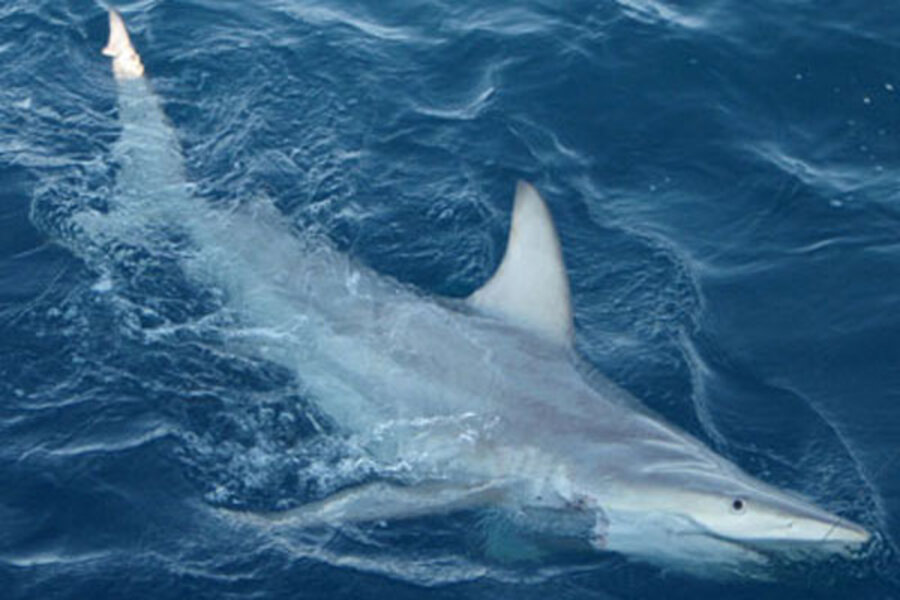New hybrid sharks discovered: Signs of global warming?
In what is being hailed as the world's first evidence of inter-species breeding among sharks, a team of marine researchers at the University of Queensland have identified 57 hybrid sharks in waters off Australia's east coast.
The new sharks possess genetic material from both the Australian blacktip shark (Carcharhinus tilstoni) and the common blacktip shark (Carcharhinus limbatus). The Australian blacktip is smaller and tends to live in warmer waters near northern and eastern Australia. Its globally distributed counterpart, the common blacktip, is larger and favors cooler waters, including those along Australia's southeastern coastline.
A press release from the University of Queensland quotes research team member Jennifer Ovenden, who suggested that other species of sharks and rays around the world could also be interbreeding.
"Wild hybrids are usually hard to find, so detecting hybrids and their offspring is extraordinary," said Ovenden.
Hybridization is common among many animal species, including some fish, but until now it has been unknown among sharks. In most fish species, fertilization takes place outside the body, with the males and females each releasing their gametes into the water where they mix. Blacktip sharks, by contrast, give birth to live young and actively choose their mates, which, as the scientists discovered, can sometimes be of a different species.
Ovenden speculated that the two species began mating in response to environmental change, as the hybrid blacktips are able to travel further south to cooler waters than the Australian blacktips. The team is looking into climate change and human fishing, among other potential triggers.
The team's findings were published in the December issue of Conservation Genetics.





